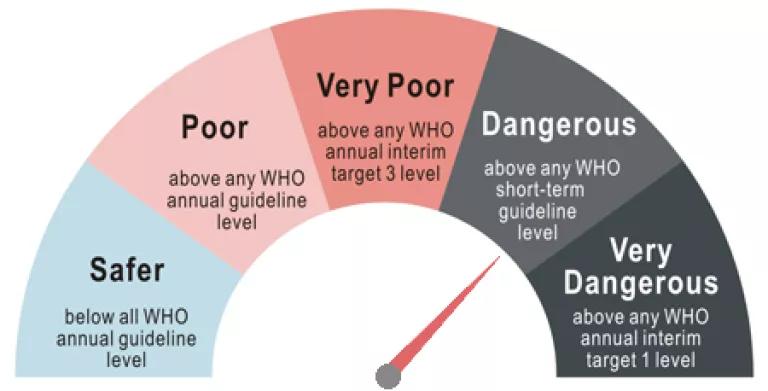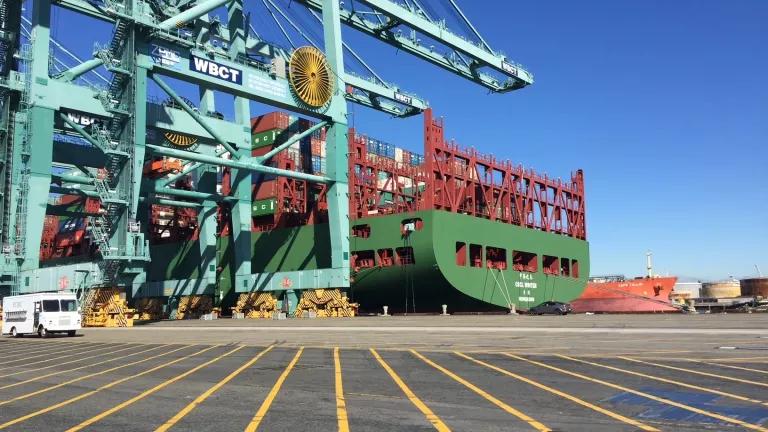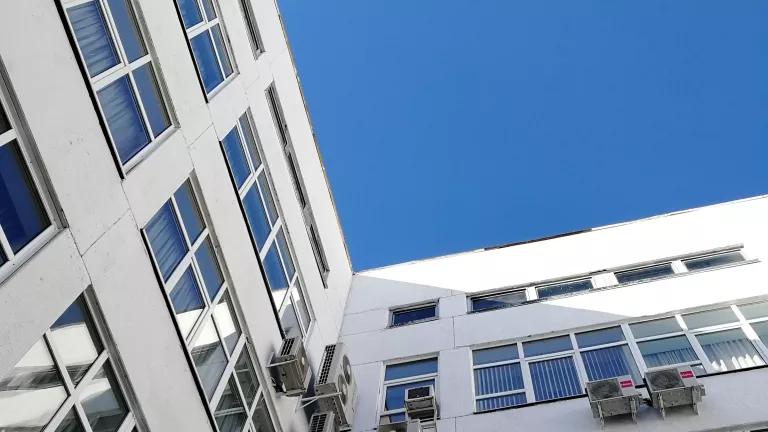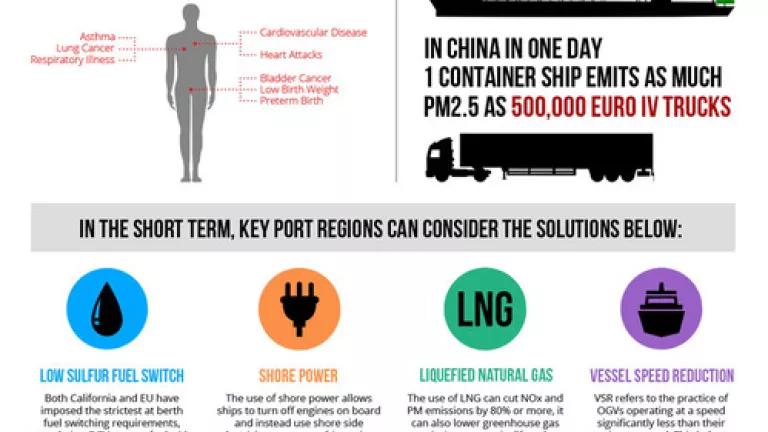
Hong Kong Harbor
Hazardous air pollution not only continues to plague much of China, but is now also stifling Hong Kong, the vibrant city whose Chinese name means “Fragrant Harbour.” Here is the view of Hong Kong that greeted me this weekend. It’s almost as if someone was playing with the air smog simulator developed by APM’s Marketplace by drawing a curtain of smog over one of the world’s most famous skylines. Only the pollution is real and it can’t be erased with a slide of the cursor.
According to the Hedley Environmental Index, which monitors and publishes real-time data about Hong Kong’s air pollution and its public health impacts, it’s been over a month since we’ve had a clear day here in which all five criteria pollutants measured at all eleven rooftop monitoring stations meet the latest World Health Organization (WHO) short-term air quality guidelines. In fact, there have only been six clear days so far this year. The index’s current air quality reading, based on WHO guidelines, indicates “Very Dangerous” levels, meaning above any WHO’s annual interim target 1 level. According to the University of Hong Kong’s School of Public Health, which developed and maintains the index, this corresponds to over HKD$109,000 in avoidable health impacts including 8 preventable deaths, 433 hospital bed days, and over 20,000 doctor visit today alone. Last year, air pollution in Hong Kong was responsible for more than 3,000 premature deaths and 7 million doctor visits in a city of 7 million.

Hedley Environmental Index
Hong Kong’s smog is caused by a mix of local and regional emissions from industrial facilities, coal-fired power plants, dirty diesel vehicles and ships burning bunker fuel, the world’s dirtiest transportation fuel. The Hong Kong government’s 2010 air pollutant emission inventory lists marine vessels as the largest source of nitrogen oxide (NOx) and particulate matter (PM10) emissions in Hong Kong. Dirty ships are therefore a major reason why particulate emissions in Hong Kong are double those of London and more than 150 percent higher than in New York. According to the Chief Executive’s 2013 Policy Address, marine vessels were also the largest source of SO2 in 2011, although specific numbers are not yet available.
Last week, Civic Exchange, a prominent public policy think tank in Hong Kong, released a report that evaluated emission levels of the cruise ship industry in Hong Kong and possible ways to reduce those emissions. According to the report, ocean going vessels (OGVs) such as container vessels and cruise ships, most of which burn dirty diesel fuel (with sulfur level up to 3.5 percent), are the top two contributors to marine emissions in Hong Kong. The WHO has recently classified diesel engine exhaust as carcinogenic to humans, which is of major concern since Hong Kong ports are located near densely populated residential and business districts. The trucks and cargo-handling equipment in and around Hong Kong’s ports are also mostly powered by diesel fuel and emit high levels of toxic pollutants.
Children living near ports are especially vulnerable to developing asthma and bronchitis symptoms. In the U.S., studies show that 30 percent of households in West Long Beach, California, situated by the Ports of Los Angeles and Long Beach, have someone affected by asthma as a result of nearby diesel pollution. Of these, 18.9 percent have at least one child with asthma. In Hong Kong, OGVs emitted 40 percent of their total emissions within Hong Kong waters while at berth in 2011, resulting in serious public health impacts. Still, port activities are projected to grow even more. The Hong Kong government is planning for the growth of its cruise ship industry as it completes construction of the Kai Tak Cruise Terminal -- adding an additional 42.6 tons of SO2, 43.8 tons of NOx, and 4.7 tons of PM10 emissions by next April.
Fortunately, some shipping companies are beginning to take responsibility for their industry’s impact on air quality and public health. The 17 shipping companies that signed the Fair Winds Charter (FWC) to voluntarily switch to low sulfur fuel at berth in Hong Kong have agreed to extend their pledge for another year after Hong Kong’s Chief Executive announced plans to introduce legislation that would make at-berth fuel switching in Hong Kong waters mandatory for all OGVs. Leveling the playing field through mandatory regulation of Hong Kong’s shipping industry is essential in order to strip away the unfair cost advantages of burning cheap, dirty bunker fuel.
As I have previously explained, air pollution is a growing regional concern, and port operators in the entire Pearl River Delta (PRD) region must collaborate to achieve long-term success. If the nearby ports of Shenzhen and Guangzhou – which together with Hong Kong are three of the busiest in the world — also mandate at-berth fuel switching, shipping companies and ports will be able to clean up while remaining competitive. The Hong Kong government is also beginning to explore with other PRD governments the feasibility of proposing to the International Maritime Organization the establishment of a regional Emission Control Area (ECA) to cap sulfur content of shipping fuel at 0.1 percent within 100 nautical miles of Hong Kong – a move that is supported by signatories of the FWC. ECAs, which are already in effect in North America and Europe, provide the most protective clean air standards available under international law and would dramatically reduce polluting shipping emissions.
Civic Exchange estimates that the introduction of an ECA would reduce SO2 emissions from OGVs by 82.5 percent in Hong Kong waters and 95 percent across the entire PRD region. Particulate emissions would drop by over 73 percent in Hong Kong waters and over 85 percent across the PRD. The number of avoidable deaths would be reduced by 91 percent.
Now that’s the way to bring back the Fragrant Harbour.
This post was coauthored with my colleague Christine Xu.



